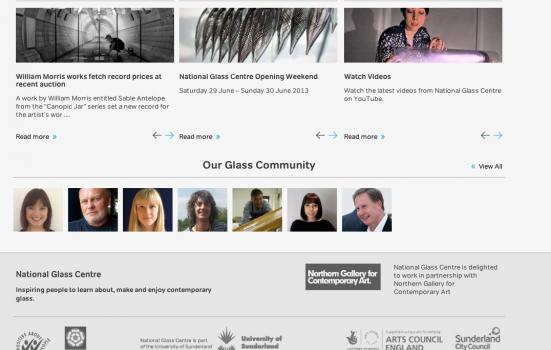Caroline Greener believes that cultural centres should be reaching out to those who will never physically visit their venue.

As an independent audience engagement specialist working mainly in the digital realm, I have worked on some interesting projects recently which have had a transformative effect on the way arts and cultural institutions engage with audiences. Audiences who have never, and probably will never, physically visit the venue.
One of the biggest opportunities I see with digital is how to take cultural organisations ‘beyond the locative experience’ in really engaging and profound ways. This is not to denigrate the ‘In Real Life’ (IRL) experience or suggest that a digital experience is in any fundamental way better. But it seems to me that all cultural venues now have the opportunity (or obligation) to reach out way beyond their walls and touch a greater range of people’s lives than ever before.
All cultural venues now have the opportunity (or obligation) to reach out way beyond their walls
At the heart of this opportunity is the website. For many cultural venues, the website is their primary digital incarnation and has the greatest potential to offer online visitors an experience. Last year I developed a three-year digital strategy for the National Glass Centre as part of its successful major capital redevelopment funding bids. The central vision of the strategy was all about how to use digital to overcome the geographical marginalisation of the venue (based in Sunderland) and take it beyond the locative experience so that a national and international audience would be able to benefit from its incredible resources in the field of glass art. I took inspiration from a number of recent website developments, notably for The Walker Art Centre and The Gallery of Lost Art, which have blown the lid off the conventional approach to building websites as ‘shop windows’ or ‘brochures’, and instead have taken a nodal approach.
Nodal web design involves applying social media principles and using the website as a machine for community engagement by positioning it as a ‘node’ rather than an endpoint in a user journey. Nodal progression is an approach that embraces new thinking around digital marketing, which suggests that sharing audiences through helpful signposting, linking and advocacy is a viable growth strategy, and traditional models of competitive marketing are becoming outmoded and counterproductive. This is particularly relevant to arts organisations whose closest competitors in terms of mission and model may in fact be geographically far away, and pose no threat to each other in terms of market share of IRL audiences.
In the case of the National Glass Centre it wanted to become the central hub for an international community of glass, and to explore how the website could facilitate this. We wanted the website to more clearly represent the organisation in terms of the complex variety of activities that it supports as a visitor centre, a tourist destination, a centre of international research and academic excellence, and its role as one of the leading teaching centres for glassmaking and glass arts.
It had lots of ideas and when it came to implementing them it was crucial to find the right technology partner to work with. Enter Indigo Multimedia, a design/tech agency with a talent for innovative digital solutions for the cultural sector. The Indigo team designed the website and added plenty of meat to the bones of the vision. Its Web Director, Andy Graney, says, “With the National Glass Centre website, we were able to provide a technical solution to a complex set of goals. One of the biggest challenges was to create a user interface and navigation system that would be flexible enough to cope with a huge range of different user needs. For the tourist or day visitor it would be important to present basic information on the landing page, such as opening times, what’s on and how to get there. We created a Calendar interface that shows the whole package on a given day – not just the special events but also the holistic offer. This is achieved through the content management system (CMS) which allows the team to use a range of tools to tag and enter events, exhibitions, classes, products and courses and, crucially, to interrelate them so that the user is presented with content that will interest them the most and suit their needs.”
“At the other end of the user spectrum, we had to think about the way that academics and researchers would use the site, and through a flowing pipeline of mega and mini menus we created an information architecture that allows deeper and deeper exploration of content. These mega menus ‘float’ over the simple page designs and create quite an elegant way to present lots of information without overloading the aesthetic.”
Another interesting design element requiring a technical solution was the integration of dynamic RSS feeds into the homepage, drawing content from a range of national and international partners, stakeholders, glass artists and ‘friendly competitors’ such as the Corning Museum of Glass in New York. A new spin on the idea of reciprocal links, this content curation is a central tenet of nodal web design and positions the National Glass Centre as a knowledge hub and thought leader. The other upside is that it creates a dynamic, constantly updating homepage, which requires minimal time and resources to populate with content.
The final piece of the nodal puzzle was to build a community platform, which would allow people with a passion for glass to connect with each other through the National Glass Centre. Individuals within the centre and from all over the world now have the opportunity to build their own profile page and blog through the new website, enabling the artists, curators, academics and students to tap into the ever-growing online audience visiting the site as well as to make social and professional connections.
Caroline Greener is a freelance audience engagement specialist.
crowdweaver.co.uk
www.nationalglasscentre.com




